The new Nvidia RTX 2080 Ti and 2080 graphics cards need to matter. They may end up mattering at some point. But for now, Nvidia has to pretend they do.
This is an opportunity for Nvidia. We reached the end of graphics in 2016. That year, id Software released its reboot of Doom, which is a gorgeous game that runs great even on modest systems. Since then, I’ve held the opinion that we don’t need much more than that. And I think the people who make games tend to agree with me. Sure, some big budget games have come along that look even better, but even those aren’t pushing system requirements very hard. If you want to run the latest games at 1080p and 60 frames per second on ultra settings, you can do that with a Radeon RX 580 or a GTX 1060.
Exceptions to that rule exist. You’ll need to beef things up to do 144hz or especially 4K, but those are both display technologies. And that’s something that will happen slowly over time. For now, the standard is still 1080p60. That’s 2.1 million pixels 60 times a second — and even with settings cranked, today’s hardware can process that with room to spare.
What all of this means is that we’re overdue for a paradigm shift. Or, to put that more honestly, chipmaker Nvidia is getting antsy. It needs a paradigm shift that will make you want to upgrade your GPU without waiting for you to buy a new monitor at some point in the future.
June 5th: The AI Audit in NYC
Join us next week in NYC to engage with top executive leaders, delving into strategies for auditing AI models to ensure fairness, optimal performance, and ethical compliance across diverse organizations. Secure your attendance for this exclusive invite-only event.
The good news for Nvidia is that it thinks it has that game-changing new technology with real-time ray tracing (RTX).
Nvidia is launching its new line of RTX cards this month. The GeForce RTX 2080 is $800 and the GeForce RTX 2080 Ti is $1,200.
The bad news for you is that it sure doesn’t seem like RTX matters yet, but you’ll still have to pay for it if you want the latest and greatest.
What you’ll like
You’re prepared for the hypothetical future
Computer graphics is all about telling a pixel what color it should be. That simple problem becomes complicated when your hardware has to do that for millions of pixels 60-to-240 times per second. But as I’ve already noted, CPUs and GPUs have improved to meet that challenge for the way we currently process images with rasterization.
I’m not an expert, but my understanding is that while rasterization requires a developer to program and tweak values for the polygons that make up a 3D image, ray tracing just works. So to get an image to look a certain way with rasterization, a 3D artist needs to pay attention to details on a minute scale. With ray tracing, you can set the material texture for a couch and a light source, and that light should reflect off of that couch as it would in the physical world.
Ray tracing is capable of producing more lifelike results than other methods. It works by figuring out which beams of light in a scene would hit your camera view. It then works backward to understand all the places that beam touched and bounced off of. Did it come from the sun and go through the window and then off the wall and then off the couch and then onto your eye? Well, ray tracing knows what changes it needs to make to the white light of the sun to account for all of those reflections and interactions. It then tells the pixel on your screen to turn that color and brightness.
It sounds like magic, but astoundingly, the concept is 50 years old. In 1969, IBM researcher Arthur Appel wrote a paper called “Some Techniques for Shading Machine Renderings of Solids.” That academic writing described the fundamental building blocks of modern ray tracing. So what took so long?
Well, it did take a while to implement those ideas, but we’ve had ray tracing in films for years. Nvidia is just now bringing consumers real-time ray tracing. For film, rendering a ray-traced frame of animation can take anywhere from hours to weeks. Games need to do those same computations in milliseconds.

Need?
So I don’t know if games “need” to do those same computations.
That word is actually the question that lies at the heart of Nvidia’s latest initiative, the RTX 2080 and 2080 Ti, and the future of video game visuals.
Do we need ray tracing?
That’s a question with many answers. Nvidia wants it. Developers want it. But as a wise man once said, it’s nice to want things.
And for now, wanting is all you and I can do with ray tracing. No games currently support ray tracing. That’s going to change fast depending on how long it takes Eidos Montreal to patch it into Shadow of the Tomb Raider. That could happen between the time I’m writing this on Tuesday night and when the embargo lifts. But the point still stands (especially since I haven’t seen real-time ray tracing work in a real game), we’re on the very cutting edge of this tech. We don’t know if it’ll really matter in the end.
So, do you need an RTX card and ray tracing? That’s an easy question to answer today. No. Absolutely not.
But the RTX 2080 and 2080 Ti are important
We’ve been through this before. Specifically, Nvidia has pushed for paradigm shifts in computer graphics exactly like this before, and we’re better off because of it. In 1999, the company launched its GeForce 256 card with hardware transform-and-lighting (T&L). That’s a technology for rendering 3D scenes onto a 2D display. At the time, critics considered that an unnecessary technology especially since almost no games supported the hardware implementation. And if you had a fast enough CPU, older video cards would perform equal or better than the more expensive GeForce 256. The drivers were inefficient and broken.
But hardware T&L won out, and it was the technology that left competitors like 3DFX behind. ATI was able to compete because it put hardware T&L in its cards, and suddenly you could only buy a GPU with hardware T&L.
Nvidia is betting on the same thing for its first generation of RTX cards. And if history repeats itself, an RTX 2080 or 2080 Ti could prove a smart investment.
The GeForce 256 had an abnormally long life because the industry took so long to fully adapt to its technology. Even as new games were coming out and embracing new standards, they kept support for the 256 through 2006. And even if you don’t jump on the RTX train now, the this is a necessary step to ensure that a future generation of RTX cards are hitting their stride alongside widespread support from developers.
That doesn’t mean you need to go out and buy one of these, but I still view that as a positive attribute of the RTX 2080 and 2080 Ti.
The most powerful cards yet
But you don’t care about Nvidia’s paradigm shift or the future of computer graphics. And you shouldn’t. You have games that you’re playing right now, and you want to squeeze more frames out of them. You’ve had money set aside for a new GPU since the nightmare of 2017’s cryptocurrency gold rush. You just need to know if you can run Rainbow Six: Siege at 144 frames per second with some of the settings turned up.
That makes sense. Let’s do some benchmarking.
For these tests, I used a 2080 Ti, a 2080, a 1080 Ti, and a Vega 64. I went with a Vega 64 instead of a GTX 1080 because I didn’t have one handy. Also, I wanted to get an AMD perspective with a card that is relatively equivalent to a 1080.
For each card, I ran identical (or nearly identical for Monster Hunter: World) across seven games at 4K and 1440p. The problem with 1440p, however, is that it is a low enough resolution that my CPU would often act as the bottleneck instead of the GPU. That’s not great for testing the performance of a GPU. So I’m going to focus on the 4K testing here.
Here’s my test bench:
- An Intel i7-8086K CPU with an AIO cooler
- 32GB of HyperX DDR4 3200Mhz memory
- SATA SSD storage
- An NZXT N7 Z370 mobo
- 650W NZXT power supply
Here are the games I tested with each card:
- Grand Theft Auto V
- Hitman DX11
- Final Fantasy XV benchmark tool
- PlayerUnknown’s Battlegrounds
- Shadow of the Tomb Raider
- The Division
- Monster Hunter: World
The results
The average of the results across all seven games:
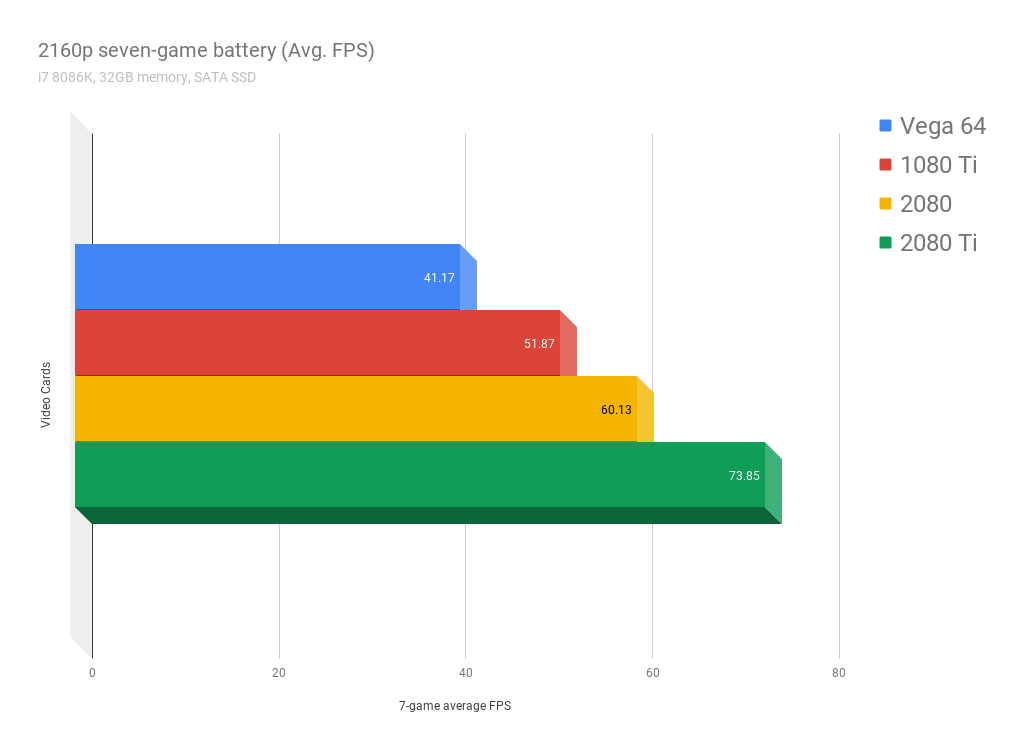
Based on my testing, the 2080 Ti is a blazing 42 percent faster than the 1080 Ti. That’s a significant gulf in performance. I’ll put that in context of price in a moment, but if you want a fast card, the 2080 Ti can provide the power you need.
The 2080, meanwhile, is 16 percent faster than the 1080 Ti. And it is 46 percent faster than the Vega 64, which is also my stand in for the 1080 (this is not a perfect comparison, but you get the idea).
I also don’t have a Titan Xp to test, but the Final Fantasy benchmark page has a lot of information to help make comparisons.
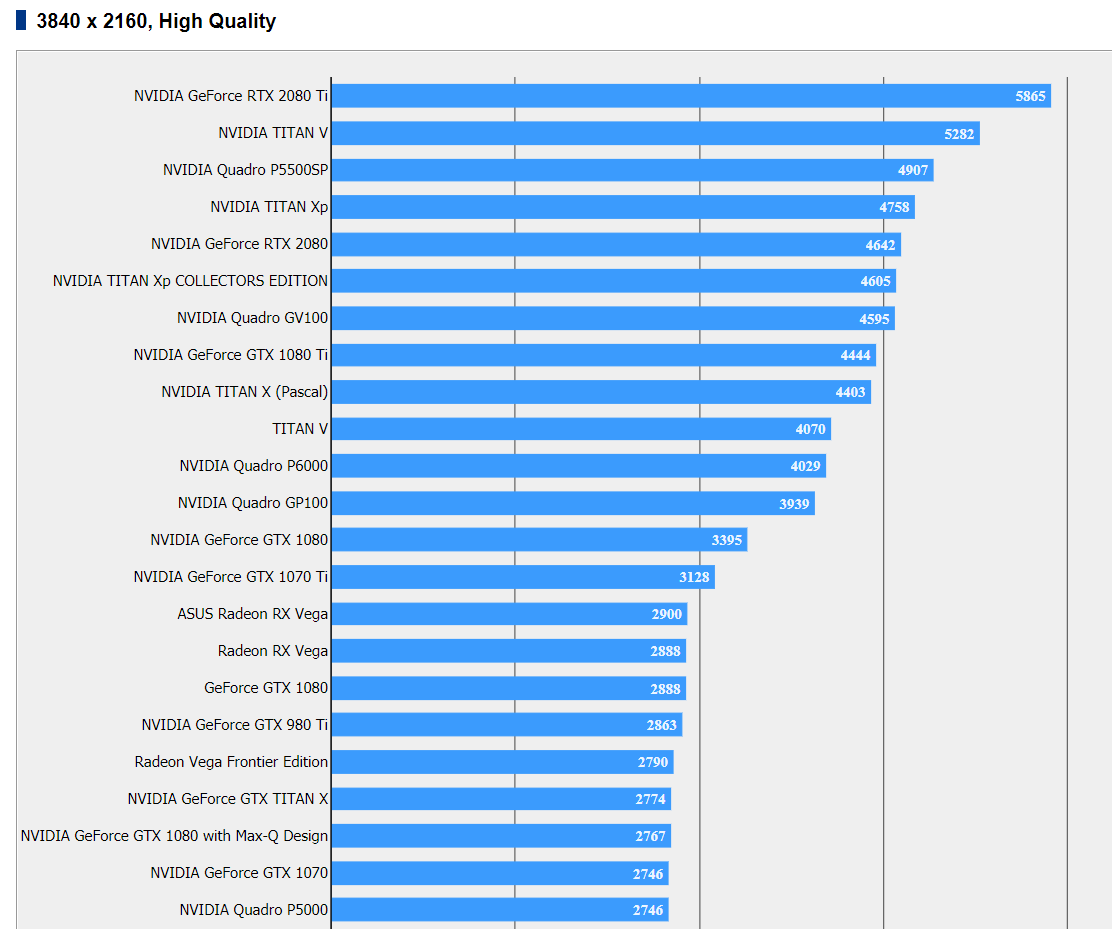
According to this page, the 2080 Ti is 23 percent faster than a Titan Xp and 32 percent faster than a 1080 Ti. These numbers are only so useful, but they provide a rough guide for the performance gains you should expect to see from Nvidia’s RTX generation.
Here’s a look at performance on a game-by-game basis:
RTX 2080 Ti and 2080 performance analysis
The 2080 is an excellent card, but the 2080 Ti is in an another class entirely. At 2160p, you can turn down just a few settings to get 60 frames per second in even some of the most demanding games. The one that surprised me the most was The Division. That’s a tough benchmark, and other than a dip during a CPU-intense moment that I did my best to minimize, the 2080 Ti stayed above 60 frames per second consistently.
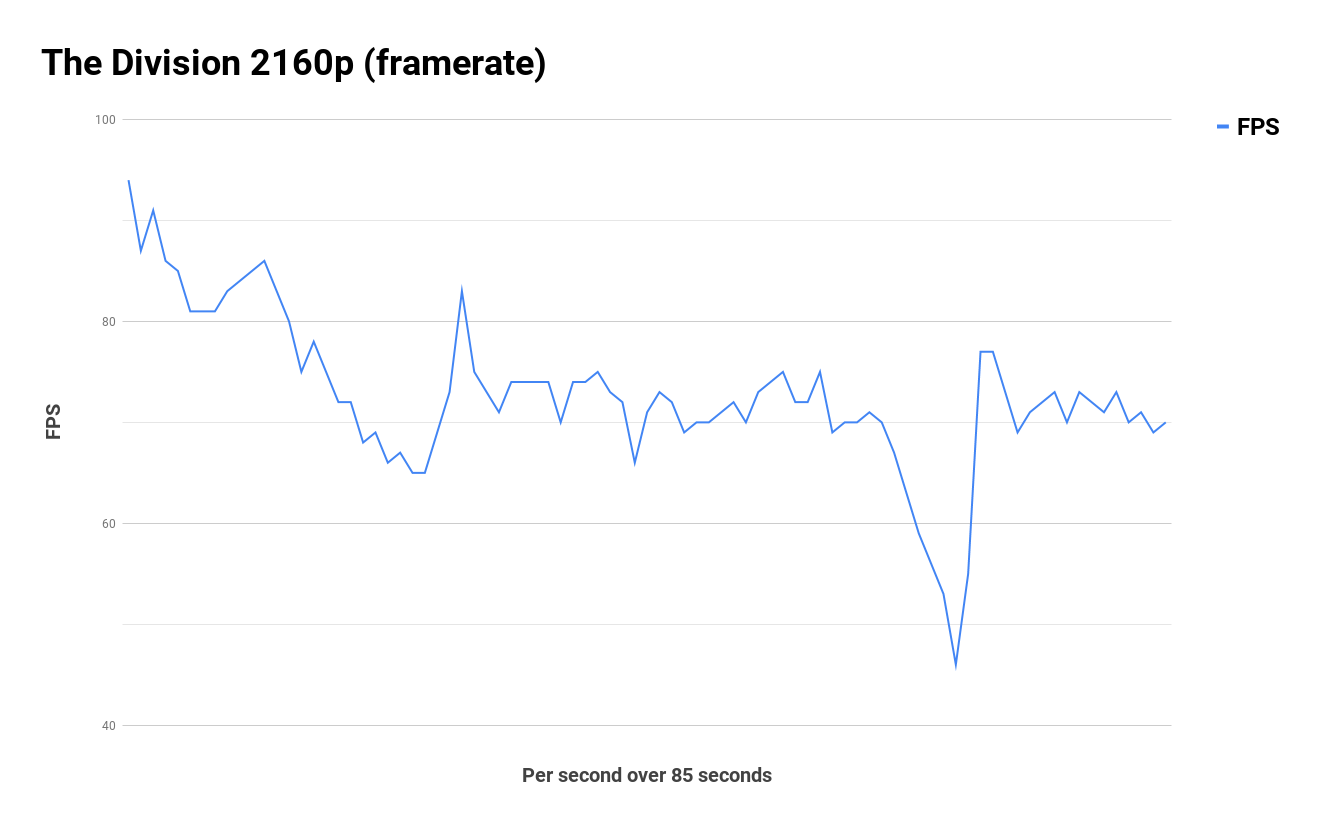
Above: For the 2080 Ti.
You can see that PUBG has similar results. It does dip below 60 frames per second a couple of times at 2160p, but that’s using the highest possible settings. You can tune those down, use a Gsync monitor, or go for 1440p and get around 120 frames per second without having to make too many visual sacrifices.
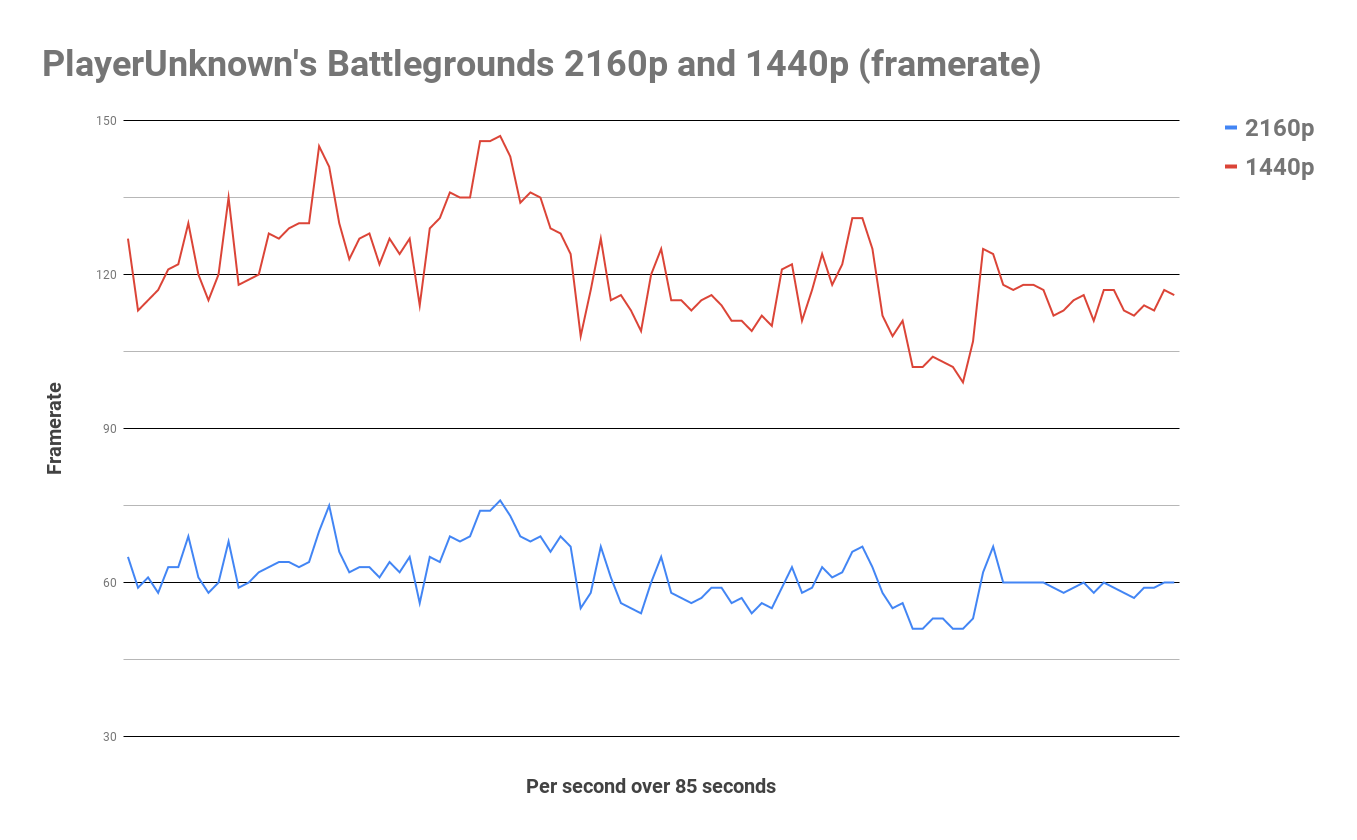
Above: For the 2080 Ti.
As a 4K card, the 2080 Ti is more than viable. It thrives at that resolution. The 2080 is also great at that resolution, but you’ll have to tune down more of the visuals. The 2080 Ti and 2080 are also great for getting 100+ framerates for your 144hz monitors. Again, you’ll have to make more sacrifices with the 2080, but not by much.
What you won’t like
Nvidia’s RTX price-to-performance ratio is off
Let’s look at the list prices for some of the most popular powerful cards.
- RTX 2070 — $500
- GTX 1080 — $550
- Radeon Vega 64 — $599
- GTX 1080 Ti — $700
- RTX 2080 — $700 ($800)
- RTX 2080 Ti — $1,000 ($1,200)
- GTX Titan Xp — $1,200
Nvidia says it will eventually have 2080 and 2080 Ti cards at those lower list prices. But for now, you have to pay what’s in the parenthesis.
If we look at prices before the model numbers, it seems like the upcoming RTX 2070 is a replacement for the GTX 1080. And the RTX 2080 is the replacement for the GTX 1080 Ti. And the RTX 2080 Ti is a replacement for the GTX Titan Xp.
But if that’s the case, the performance gains aren’t quite as impressive. The 2080 is more powerful than the 1080 Ti, but only by 16 percent. Meanwhile, it is $100 more expensive at the moment. Even when you can get a 2080 for $700, however, that 16 percent bump is well below Nvidia’s traditional 25 percent generation-on-generation gain for its cards.
So you are paying more or the same as the equivalent last-gen card, but you aren’t getting an equivalent boost to performance.
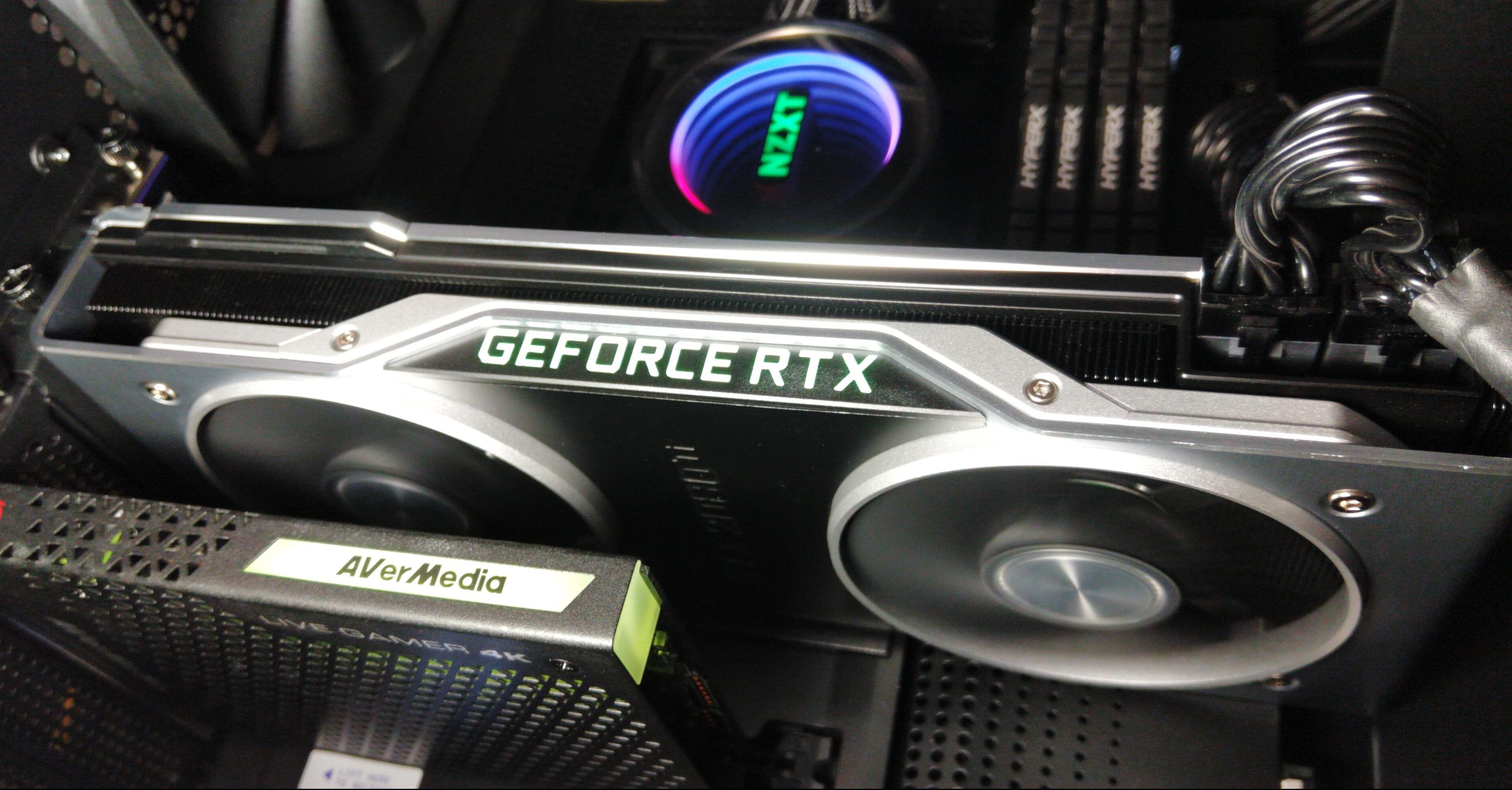
Ray tracing and DLSS are untested
Nvidia would argue that your money is going toward specialized hardware for ray tracing and other tricks like deep-learning super sampling (DLSS). And maybe at some point that will make sense. For now, however, those processing cores are going to sit around working on other tasks.
Ray tracing isn’t in a single game. DLSS is in a separate build of the Final Fantasy XV benchmark, but it’s also not in a game.
Last month, Nvidia spent hours going over these features, and now I can’t test them for my first-take review. I think that paints a picture of the state of the RTX generation. Maybe these features will matter. At this point, I have no way of knowing. So it’s easy for me to say that they shouldn’t be the reason you buy one of these cards yet.
Conclusion
The RTX launch is a mess, but you wanna know a secret? I love it. The 2080 and 2080 Ti are powerful cards. If you want a GPU that can pull off 144hz with mostly high settings, both of these are great options. If you need something to do 4K on high, that 2080 Ti is unbeatable at the moment.
Beyond those specific use cases, though, RTX cards don’t make a lot of sense at the moment. And I think Nvidia knows that. It is pushing them out into a world that is not ready for them. This is a company that understands that you have to force the world to get ready for you.
And all that talk from Nvidia chief executive Jensen Huang in August about ray tracing? What was that all about if the world isn’t ready for it? You could call it marketing. I’m sure some people will call them lies. But try zooming out. Don’t just consider this market one GPU at a time. Think about the next gen of RTX cards and the one after that. Real-time ray tracing is probably inevitable.
In the meantime, Huang and Nvidia are going to have to fake it until they make it.
The ‘making it’ part is what matters
I want you to recognize that Nvidia is faking the importance of ray tracing at the moment. I hope I illustrated that throughout the text. But I think it’s important that we also recognize that Nvidia will probably make it as well.
In two years, we may look back fondly on this transitional period and praise Nvidia for ushering it along. It’s possible.
But for now, all that leaves us with are a couple of cards that I wouldn’t recommend to most people.
Let’s see what happens with the ray tracing. If DLSS improves performance. Or if this disruptive mess reshapes computer graphics for the better. My bet is that it will. I just wouldn’t bet your money.
Nvidia’s RTX 2080 Ti and 2080 begin shipping this week and next week. It provided samples of both cards for the purpose of this review.








